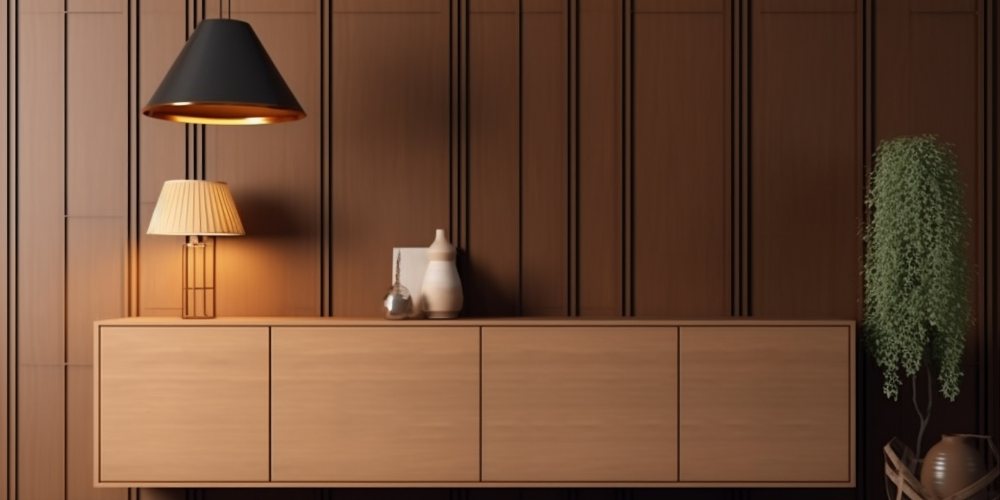Don’t be afraid to experiment!
Interior design rules can be helpful in many respects; however in some contexts they can limit the creative process and choke innovation.
On the other hand, if rules must be broken, you need to know what you’re doing.
So, as interior designers with extensive experience, we’re publishing this blog post on interior design rules that are meant to be broken, so you know how to innovate and experiment on your interior design and room decoration project.
Interior design rules to break
Rules are made to guide designers and decorators, and they’re nothing but the experience of numerous interior designers, pooled together.
However, if they come in the way of creating a visually interesting or aesthetically efficient space, you have no choice but to go for alternatives.
This is how you can break some of the most commonly cited interior design rules:
- Everything should match
- Breaking known colour combinations
- Avoiding artificial (a.k.a. “faux”) plants
- Avoiding dark colours in small rooms
- Don’t mix patterns
- Antique furniture should not be repainted
Rule: Everything should match
- The carpets need to match the curtains.
- Dressers/headboards/nightstands need to match.
Yes, these are frequently seen as rules…and yes they do help in creating good interior design in many contexts.
That being said, in many respects it will be a good idea to mix things up.
Asking for the room interior to be “homogenised” (that is, matching colours and styles everywhere in a room) is a fad.
However, in many cases it can backfire, leading to a boring look.
While your home interior should have an overall theme, your bedroom should not look like your living room, and your living room should not look like your home office.
Don’t be afraid to mix things up!
Rule: Have contrasting dining chairs
This is one of the most commonly cited rules – have a “set” of matching dining chairs.
Yes, a dining chair set does work to bring the entire dining room together, BUT…
If you see a chair that you feel goes very well at the dining table, don’t be afraid to include it!
Placing chairs of different materials, sizes and colours can add character to your dining area.
Rule: Have matching bedside tables
Matching bedside tables aren’t essential for a room to have great aesthetics.
There are many great nightstand models out there for you to limit yourself to just one lopok.
Matching lamps on unmatched tables, for example, is a great way to bring a bedroom together.
Rule: Don’t break known colour combinations
Colour theory does yield many valuable tips and combinations when it comes to choice of colour in your room.
That being said, sometimes, unexpected colour combinations do work really well.
What’s behind the “known” colour combinations?
Well, some colours look good together stylistically speaking. Certain combinations can lead to a room having a certain feeling or atmosphere.
HOWEVER
That does not mean that there is any one “correct” colour palette.
At the end of the day, colour is a personal choice and something unique may work for you but not for others.
If you feel comfortable with a certain mix of colours, or if it brings you joy, go for it!
Rule: Avoid artificial (a.k.a. “faux”) plants
Yes, real plants have benefits that go far beyond just looking good (like regulating room temperature and filtering dirt and germs)…
And yes, in many cases faux plants can make the room seem not authentic.
HOWEVER
Greenery – whether real or “faux” – can add a visual breath of fresh air to a room and liven up the atmosphere inside.
And in recent years much better looking faux plants are being produced making them more and more perfect for you if you’re looking to avoid the responsibility of taking care of your room plants daily.
So, don’t be afraid to introduce faux plants into your room – and don’t forget to dust them periodically.
And this isn’t limited to inside your room…
Rule: You can even add faux plants outside
Faux plants can be quite high-quality while being budget and maintenance friendly.
You can get as many of them as you want in a variety of sizes and types.
Mixing up real and faux plants can give your patio/garden a real visual boost too!
Rule: Dark colours should be avoided in small rooms
This is a rule or notion that we ourselves have seen many interior design clients to have – that lighter colours create an illusion of space.
And while that’s true in a lot of cases there is no one-size-fits-all solution that can be the best choice for every room.
Here’s the deal: dark colours can camouflage small size and create depth. A dark colour can conceal boundaries and corners to make a room look larger.
It can achieve the perfect dramatic backdrop to add in layers of texture and patterns through furniture, accessories and other room decor.
You should consider the natural lighting, ceiling height and personality when deciding the colour pattern.
Rule: Avoid pattern mixing
Here’s the thing – you should never be afraid of being bold. Mixing patterns can give your space character and contrast.
Remember to make sure things are complementary.
Even dissimilar prints – like plaid matched with florals or dots paired with stripes – can go well with each other.
Such combinations can give your space movement and life.
HOWEVER
Getting a mix of patterns right is something that takes practice.
So, on this one, you should leave it to the professional designers.
You can try out small experiments however, like mixing up small things like curtains and throw pillows.
Rule: Don’t paint antique furniture
Many designers like to stick to an unspoken rule that antique items should be left as they are.
But, think about it.
Couldn’t altering an old table or an antique wardrobe be just what your room needs to gain a new character?
A high-gloss coat of fresh paint is a great way to refresh furniture.
If you want to maintain a traditional feel, go for a black base with gold striping.
Breaking the rules to achieve great design
By now, it should be clear that sometimes breaking the rules will achieve a lot more for your space than sticking to them can.
Whether that is in terms of refreshing the look, giving it a new character or just making it look better and more efficient.
So, definitely bring this up when you discuss your room interior project with your chosen interior designer.











